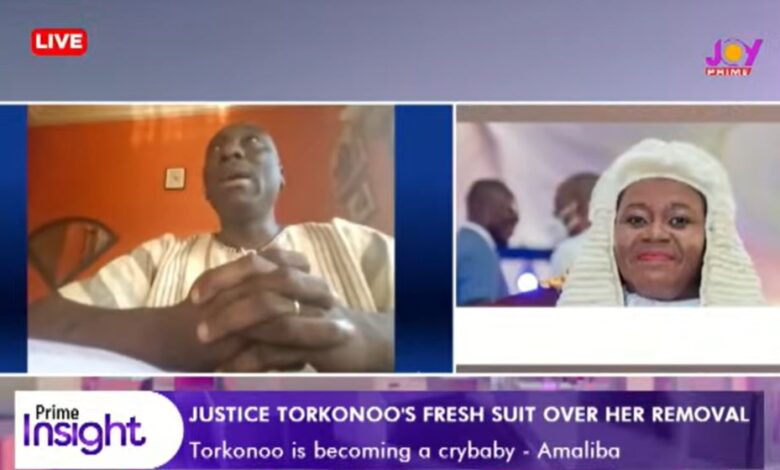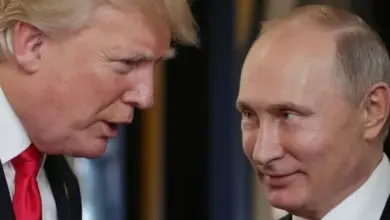Torkonoo’s picture is missing at Supreme Court – Amaliba claims


Private legal practitioner and former Director of Legal Affairs for the National Democratic Congress (NDC), Abraham Amaliba, has ignited a fresh legal and political debate over the controversial removal of former Chief Justice (CJ) Justice Gertrude Torkornoo, arguing that the manner of her dismissal amounts to a historical and institutional erasure.
Mr Amaliba suggests that the removal, which stemmed from a contentious judicial inquiry and subsequent presidential action, is designed to diminish her tenure and impact on the judiciary systematically.
Picture Missing: The Symbolic Erasure of a CJ
Speaking publicly on the matter on Joy Prime’s Prime Insight on Saturday, October 18, Mr Amaliba cited a specific, highly symbolic observation to illustrate the deep institutional implications of Justice Torkornoo’s exit.
He recounted visiting the Supreme Court where the portraits of past CJs are traditionally displayed, only to find hers absent.
“I was at the Supreme Court in the conference room of the chief justice, and I saw all the justices’ pictures on the wall, and her picture was missing.”
Mr Amaliba stressed that this physical omission is the powerful, real-world consequence of her removal, suggesting a deliberate attempt to erase her record from the gallery of Ghana’s judicial leadership.
He stated unequivocally:
“What happened to her has an effect of saying that she never existed as a chief justice.”
Justice Torkornoo was appointed as Ghana’s third female Chief Justice, taking the oath of office in May 2023 after the retirement of her predecessor.
Her removal, which occurred roughly a year and a half into her constitutional four-year term, has been a major point of contention, with critics arguing the process was politically motivated and violated constitutional guarantees of judicial independence.
Impact on Legacy and Institutional Integrity
The legal practitioner emphasised that the impact of such a high-profile, non-standard removal procedure extends beyond the individual.
It sends a chilling message to the over 350 judges and magistrates across Ghana’s court system regarding the security of their tenure and the potential political vulnerability of the Judiciary’s highest office.
Mr Amaliba’s analysis underscores the severity of the action taken against the former Chief Justice, arguing that the effect of the removal process is intended to render her tenure non-existent in the country’s judicial history.
“That is the effect of what has happened to her.”
Constitutional law experts note that a Chief Justice can only be removed under Article 146 of the 1992 Constitution, which requires a petition, a committee of inquiry, and specific findings of misbehaviour or incompetence.
The controversy surrounding Justice Torkornoo’s removal centered on whether these procedures were fully and fairly adhered to, or whether the process was fast-tracked under political duress.
Mr Amaliba’s comments come amidst mounting public scrutiny of the separation of powers and judicial security in Ghana, raising fundamental questions about the ultimate authority over judicial leaders and the sanctity of their historical contributions.
The symbolic removal of a former Chief Justice’s portrait in a primary official setting is viewed by many in the legal fraternity as a profound institutional affront.
DISCLAIMER: The Views, Comments, Opinions, Contributions and Statements made by Readers and Contributors on this platform do not necessarily represent the views or policy of Multimedia Group Limited.
DISCLAIMER: The Views, Comments, Opinions, Contributions and Statements made by Readers and Contributors on this platform do not necessarily represent the views or policy of Multimedia Group Limited.
Source link





